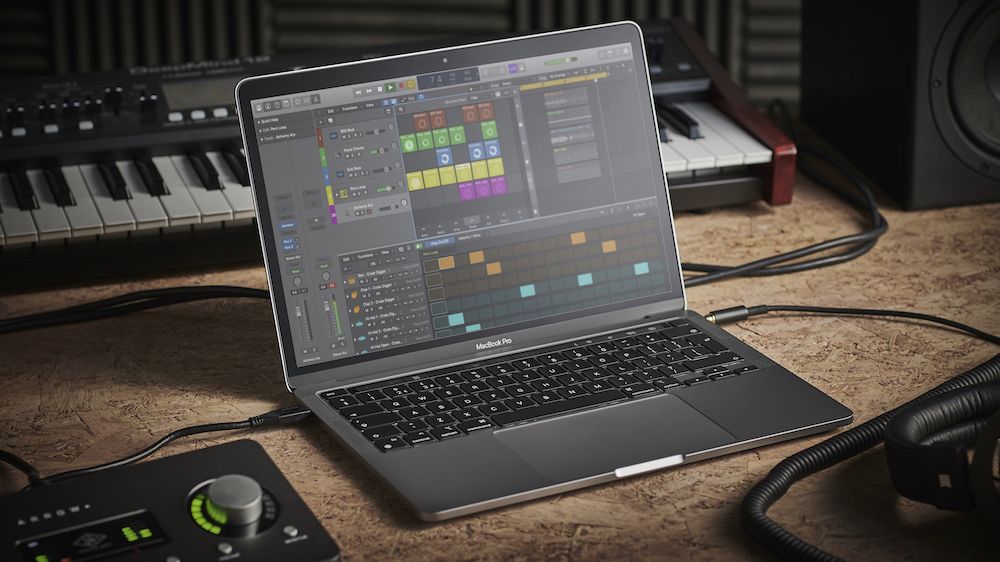Introduction
In the world of music production, the ability to streamline your workflow and maintain organization is crucial for success.
Whether you’re a seasoned producer or just starting out, having efficient systems in place can greatly enhance your productivity and allow you to focus on what truly matters: creating exceptional music.
In this blog post, we will explore the various strategies and techniques employed by industry professionals to optimize their music production workflow.
Drawing insights and examples from popular artists and musicians, we’ll uncover the secrets behind their creative processes and how they maintain organization throughout their projects.
Understanding the Music Production Workflow
Before diving into the strategies, let’s first grasp the concept of the music production workflow.
It encompasses all the stages involved in creating a piece of music, from initial composition and recording to editing, mixing, and finalization.
It is within this workflow that the organization plays a pivotal role in keeping everything running smoothly.
For example, renowned producer and DJ, Calvin Harris, stresses the importance of having a clear plan and structure from the start.
By establishing a defined workflow, he ensures that his ideas are effectively translated into finished tracks.
This means outlining a step-by-step process, such as sketching out melodies, arranging sections, and refining sounds, which helps him maintain organization throughout the production journey.
Setting Up Your Workspace for Efficiency
Creating an optimal workspace is essential for fostering creativity and productivity. Look no further than legendary producer Pharrell Williams, who believes that the physical environment greatly influences the creative process.
By curating an ergonomic and inspiring workspace, Pharrell ensures that he can fully immerse himself in his music.
This might include choosing comfortable furniture, positioning equipment for easy access, and incorporating elements that stimulate inspiration, such as artwork or mood lighting.
Additionally, selecting the right equipment and software is paramount. Taking cues from Grammy-winning producer Jack Antonoff, who has collaborated with artists like Taylor Swift and Lorde, having reliable gear and software allows for a seamless workflow.
By investing in high-quality tools that suit your production style, you can minimize technical glitches and maximize efficiency.
Preparing Your Project Files
Disorganization in project files can lead to wasted time and frustration. To avoid this, develop a consistent system for structuring and naming your files.
By including relevant information like project name, date, and version number, he ensures that files are easy to locate, regardless of how many projects he’s working on.
Furthermore, utilizing project templates and presets can significantly speed up your workflow.
Take inspiration from pop icon Ariana Grande’s producer, Tommy Brown, who creates custom project templates with his frequently used instruments, effects, and settings. This allows him to jumpstart his production process and maintain a consistent sound throughout his projects.
Time Management Techniques for Music Production
Effective time management is a skill that all successful producers possess.
By breaking down larger tasks into smaller, manageable ones, you can maintain focus and stay on track. It’s crucial to be mindful of your productivity and make adjustments when necessary.
Another useful strategy is to prioritize tasks and create a production schedule. This method is favored by hit-making producer Max Martin, who has worked with artists like Katy Perry and The Weeknd.
By allocating specific time slots for different tasks, such as composition, recording, and mixing, you can maintain a structured workflow and avoid feeling overwhelmed.
Streamlining the Recording Process
Efficiency during the recording process can save valuable time and energy. Ed Sheeran, known for his songwriting and production prowess, advocates for adequate preparation.
This involves ensuring that all instruments and equipment are properly set up and ready to go before starting a recording session. By doing so, you can minimize interruptions and optimize your creative flow.
During the recording process, it’s essential to have techniques in place for efficient tracking and editing. The legendary producer Rick Rubin advises capturing as many takes as needed to ensure the best performance.
However, it’s crucial to avoid excessive takes, as it can lead to decision paralysis and slow down the workflow. Instead, adopt a mindset of striving for quality while being mindful of efficiency.
Once you’ve recorded multiple takes, organizing and managing the recorded files becomes crucial.
This organization ensures that you can easily locate and access specific takes or audio clips when needed, saving you time during the editing and mixing phases.
Efficient Editing and Mixing Strategies
Editing and mixing are integral parts of the music production process.
To optimize your workflow, implement effective editing techniques. Andrew Scheps advises using keyboard shortcuts and automation to expedite editing tasks.
Learning and utilizing these shortcuts can significantly speed up your workflow, allowing you to focus more on creative decisions rather than tedious technical tasks.

Studio Mixer
When it comes to mixing, organization plays a pivotal role. Multiple award-winning producers and mixer Manny Marroquin suggest developing a consistent labeling system for tracks, plugins, and effects.
By applying descriptive names to each element in your mix, you can quickly identify and make adjustments, resulting in a more efficient and streamlined mixing process.
Collaboration and Communication in Music Production
In today’s interconnected world, collaboration often takes place remotely. This calls for effective tools and strategies for seamless communication.
Take inspiration from producer and songwriter Finneas O’Connell, who frequently collaborates with his sister, Billie Eilish. He emphasizes the importance of regular and open communication throughout the production process.
Whether through video calls, messaging platforms, or cloud-based collaboration tools, maintaining clear lines of communication ensures that everyone involved is on the same page, preventing miscommunication and saving valuable time.
Furthermore, sharing project files and collaborating with others necessitates a robust file-sharing and version-control system.
Grammy-winning producer Pharrell Williams, known for his collaborative work with numerous artists, recommends using cloud storage platforms like Dropbox or Google Drive.
These platforms allow for seamless sharing and syncing of project files, ensuring that everyone involved has access to the most up-to-date version of the project.
Organizing Samples, Sounds, and Plugins
A well-organized library of samples, sounds, and plugins can significantly enhance your workflow.
By categorizing and labeling your samples based on type, genre, or mood, you can quickly find the perfect sound to enhance your production, saving valuable time in the creative process.
Similarly, managing virtual instrument libraries and plugins efficiently is crucial. Multiple Grammy-winning producers and musician Pharrell Williams stresses the significance of keeping a curated selection of plugins that you are familiar with and use consistently.
Having a streamlined collection allows for quicker access to the sounds and effects you need, reducing the time spent searching through an overwhelming array of options.
Collaboration and Communication
Take advantage of collaboration features offered by project management software to streamline communication among team members.
Grammy-winning producer Mark Ronson suggests using tools that facilitate real-time collaboration, such as instant messaging and discussion boards. This promotes effective communication and ensures everyone involved in the production is on the same page.
Utilize file-sharing capabilities to securely exchange project files, stems, and reference tracks within the project management platform. This eliminates the need for scattered email chains and ensures that all relevant files are easily accessible to team members.
In today’s music industry, collaboration often extends beyond geographical boundaries.
Project management software can facilitate real-time collaboration and enable remote work, allowing artists, producers, and engineers to collaborate seamlessly regardless of their physical locations.
Also utilize features like video conferencing, screen sharing, and virtual project rooms to facilitate virtual meetings and collaborative sessions.
This allows team members to communicate face-to-face, share ideas, and work on projects together in real time, regardless of their physical distance.
Efficient collaboration requires effective version control and clear revision history.
Project management software offers version control features that allow you to track changes, compare different versions of files, and roll back to previous iterations if needed.
By maintaining a detailed revision history, you can easily trace the evolution of your music, review past changes, and identify which elements contributed to the final result.
This provides valuable insights and helps maintain a cohesive vision throughout the collaboration process.
Check out: The Role Of Collaboration in Music
Finalizing and Delivering Your Music
As you near the completion of your music production process, it’s important to focus on finalizing and delivering your music effectively. Quality control is paramount.
Grammy-winning producer and engineer Jimmy Douglass suggests stepping away from your project for a brief period before finalizing it.
Returning to it with fresh ears allows you to catch any last-minute tweaks or adjustments that may enhance the overall quality of the production.
Preparing your tracks for mastering is another crucial step in the finalization process. Mastering engineer Emily Lazar, who has worked with artists like Coldplay and HAIM, recommends organizing your tracks and preparing them for the mastering stage.
This includes ensuring consistent levels, proper fades, and accurate metadata. By taking the time to organize and prepare your tracks meticulously, you provide mastering engineers with the necessary elements to deliver the best possible final product.
When it comes to organizing and delivering your final files, efficiency is key. Grammy-winning producer and artist Skrillex stresses the importance of using clear and consistent file naming conventions when providing files to collaborators, clients, or distributors.
This ensures that everyone involved can easily identify and access the correct files, preventing any potential confusion or delays in the process.
Conclusion
Developing a streamlined music production workflow and implementing effective organization strategies can revolutionize your creative process.
Drawing inspiration from popular artists and musicians, we have explored various insights and examples that shed light on the importance of efficiency and organization in music production.
By setting up an ergonomic workspace and digesting a hand full of the tips above, you can unlock your creative potential and maximize your productivity.
Remember, these strategies and techniques are not one-size-fits-all solutions. It’s essential to adapt and customize them to suit your personal style and preferences. Experiment, learn from the experiences of industry professionals, and refine your workflow over time.
Ultimately, an efficient music production workflow and organization system empower you to focus on what truly matters: expressing your artistic vision and creating exceptional music that resonates with audiences worldwide.
So, embrace the power of organization, streamline your workflow, and watch your creative potential soar.
Check out: Tips for Mixing Vocals As an Amateur Audio Engineer






